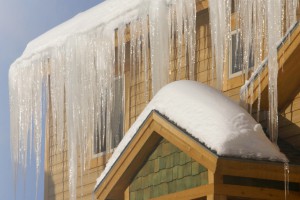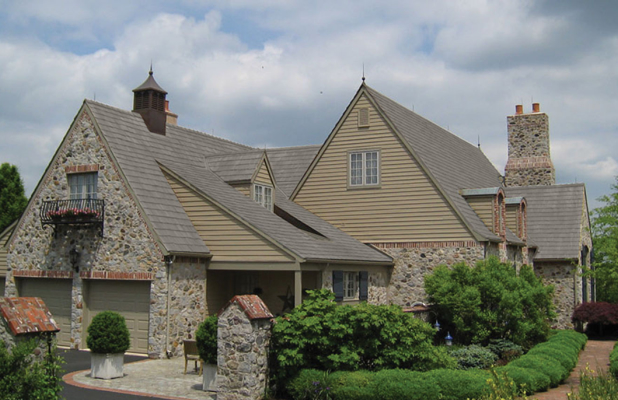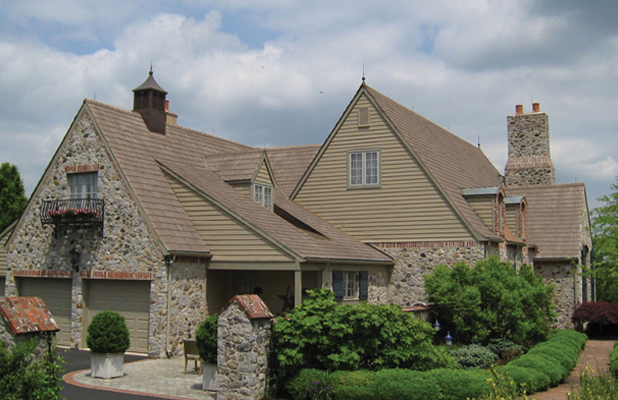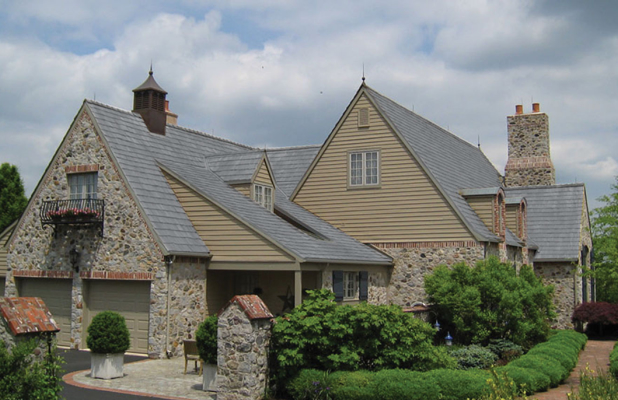Protect your Home From Ice and Water Damage
The winter months are now upon us and homeowners with roofing needs should not look past the importance of ice and water shield. This underlayment is required for all types of roofing products when installing a new roof system. Building code has mandated this material. The installation of this product is paramount to achieve a water tight roof for all seasons. Do not allow a contractor to install your new roof without applying this material first.
The purpose is to protect your home from the dangers of ice damming and wind driven rain and snow. This occurs when the sun’s rays melt the snow pack during the day and when it starts to refreeze the water will back up under the roofing material. This typically occurs at the bottom of the roof section from the gutter up a few feet. Architectural design of your roof also plays a role. Roof lines with valleys and gussets will cause snow to build up, especially from drifts and the water can actually go uphill. Yes it is true, water can go uphill!
Building code states the underlayment is to be placed at the bottom of the roof and extend upward until it reaches 24” past where the interior wall line connects perpendicular to the roof deck. If a contractor says they are going to install this underlayment on the bottom 36” it may not be up to code standards depending on the width of the eave.
Every roof installed by The Cedar Roof Company includes this important material, it is part of our Plus Package. The fist line of each estimate we generate begins with the following description, “Install Ice and Water Shield to bottom edge of all roof sections, in all valleys and around skylights, chimneys and pipe vents. This underlayment is a self- adhered asphalt composition designed to guard against ice damming and wind driven rain and snow. It is placed at the bottom edge of the roof and must extend up the roof past the interior wall line 24” by building code standards. THE CRC goes beyond this requirement by placing around all roof penetrations.”
Ice and Water Shield Installation
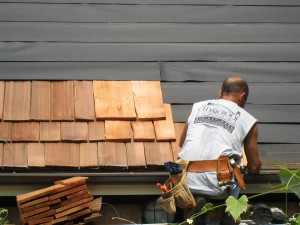 This material is water proof and self-sealing around fastener penetration. A quality roof installation will have this installed on all bottom eaves, valleys and around all penetrations in the roof such as pipe vents, chimneys, skylights and fans. The material is not cost prohibitive when considering the benefits it provides. The omission of ice and water shield can lead to avoidable interior repairs. No homeowner wants to pay to have new roofing removed and reinstalled to add something in that should have been included during the original scope of work.
This material is water proof and self-sealing around fastener penetration. A quality roof installation will have this installed on all bottom eaves, valleys and around all penetrations in the roof such as pipe vents, chimneys, skylights and fans. The material is not cost prohibitive when considering the benefits it provides. The omission of ice and water shield can lead to avoidable interior repairs. No homeowner wants to pay to have new roofing removed and reinstalled to add something in that should have been included during the original scope of work.
The product is easily installed. It comes in a roll form for ease of use. The underside has a plastic backing that allows the contractor to place the material on the entire length to be covered. Once put into place the backer is removed. This will expose the sealant designed to adhere to the roofing substrate. If the roof section is to be covered immediately only a few short staples are necessary to secure to the roof. During the warm months of the year the underlayment will seal to the roof deck very quickly. During colder months it may be necessary to fasten the underlayment mechanically to the substrate. The roof sheathing must be clean of all dirt and debris, all existing nails should be flush with the surface or removed. The surface should also be dry. It is very important to make sure the material is flat and not wrinkled and contain air pockets. This will defeat the purpose and also result in the shakes/shingles to not be fully seated into the proper position.
While ice and water shield is a very effective solution the product itself is not a total cure for ice damming. Rain gutters and downspouts that are clogged with debris will also cause freezing water to back up inside the home. Proper ventilation can also help alleviate the effects of ice damming by allowing cool air to circulate in the bottom of the roof. This displacement of warmer air will reduce the risk of back-up.
– The Cedar Roof Company Installation Manager, Mike Malone
